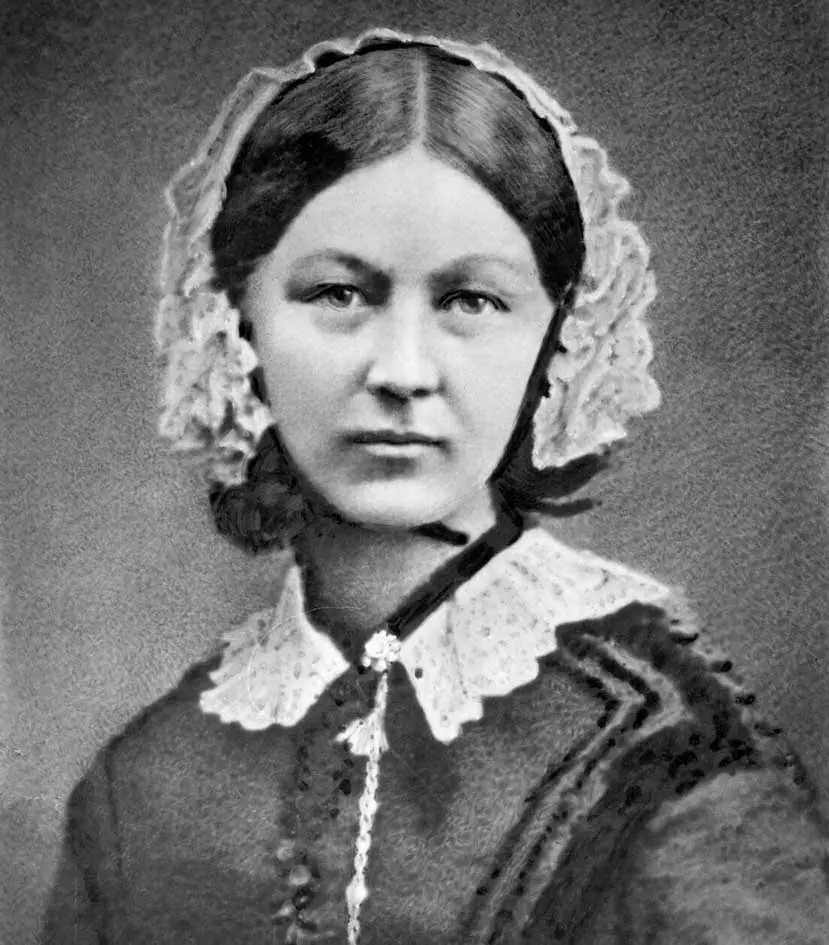Florence Nightingale: The Lady With the Statistics
By MS. KIM KNIGHT, STAFF WRITER
“Statistics is the most important science in the whole world: for upon it depends the practical application of every other science and of every art: the one science essential to all political and social administration, all education, all organization based on experience, for it only gives results of our experience,†said Florence Nightingale.
For many, Florence Nightingale’s name is synonymous with the famous image of the “Lady with the Lamp,†who tirelessly nursed wounded soldiers in grim conditions during the Crimean War. Many are unaware, however, that she was also a brilliant statistician. Born into privilege in 1820, she was first educated in statistics but said a higher power called her to become a nurse, which was not seen as a proper career for a lady in society at the time. Breaking the mold, she excelled in her duties and is believed to be among the first women on the battlefield, where she led a team of nurses.
On the war front, conditions in the rat-infested field hospitals were atrocious. Wounded soldiers brought from the battlefields faced filthy, unsanitary conditions, and many died in blood-soaked bedding without sterile bandages, supplies, or medication to properly heal their injuries. Drinking water was contaminated by sewage run-off and animal remains. In cramped wards, infection and diseases such as typhus, typhoid, and cholera spread rapidly. It was estimated that “16,000 of the 18,000 deaths were not due to battle wounds but to preventable diseases, spread by poor sanitation.â€1
During the war, it was evident that a vast amount of important information was not being recorded and tracked. Sadly, at the time, not all deaths in battle were documented, plus there were extremely unhealthy issues in the medical profession, such as sanitation and nutrition. Nightingale documented, analyzed, and applied those lessons learned and radically reformed the rudimentary healthcare profession. It is stated that she reduced the hospital mortality rate from 42 percent to 2 percent. Ironically, the decline in death rates was not from care but was due to operational changes. She said, “Administration saves more patients than the best medical science.â€
Her unwavering compassion brought her fame, and she used it along with statistics to make advancements in operations. She understood the power of the written word and worked tirelessly on media campaigns to advocate needed change and solidify support from her peers and the public. Her tactics proved to be successful when the war death rates made newspaper headlines in Britain.
Long before graphic design was used to present statistics in a visually appealing manner, Nightingale effectively used engaging infographics, such as her polar area graph, to display the hard-hitting data. The charts were broken down to show death by battle injury, by accident, and the largest majority, by preventable disease.
Based on official war records, the data analysis compared cross-sectional data with longitudinal data. It was only when the data were gathered methodically that clear patterns emerged. The information once buried in files became the foundation for a data-based decision process.
2The Nightingale Method:
- Get the best information available
- Use government reports and statistics
- Read and interview experts
- If the information available is inadequate, collect your own:
- Draw up questionnaire
- Consult relevant practitioners
Nightingale’s quest to modernize healthcare did not stop after the war. She recognized a need to restructure wards because, at the time, they contained large rooms with up to 100 beds, crowded together for maximum efficiency. She redesigned hospital architecture with fewer patients per room and windows for ventilation to combat cross-contamination of germs. Her methods of frequent hand-washing and distancing patients to avoid contamination and even the need to ventilate spaces is fitting when compared with the virus we have all experienced in recent history.
For those who take the time to look back in the archives of The Mobility Forum, first published in 1954, it is easy to see many great advancements in aviation safety. Those advancements were largely based on meticulously gathering information during mishap or fatality investigations, analyzing the data, and identifying trends or patterns to make changes and prevent similar occurrences. Today, we are in the midst of a technological revolution with vast amounts of information at our fingertips that could be further analyzed or merged to improve operations or help to prevent fatalities. If we dig into the information further, will we make startling discoveries like Nightingale? Only time will tell!Â
1 https://www.bbc.co.uk/teach/florence-nightingale-saving-lives-with-statistics/zjksmfr


